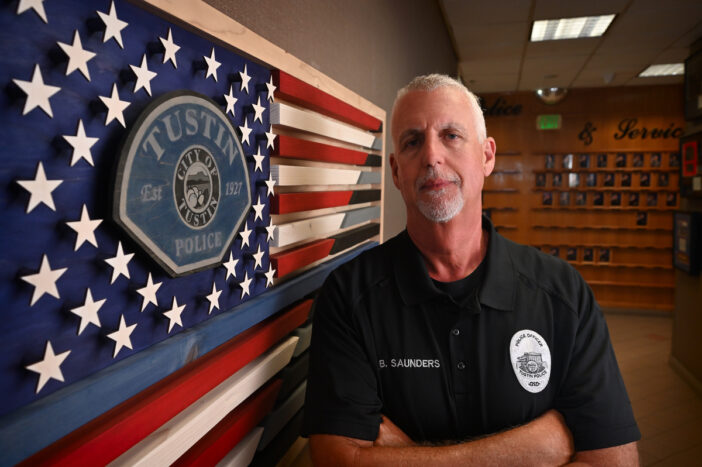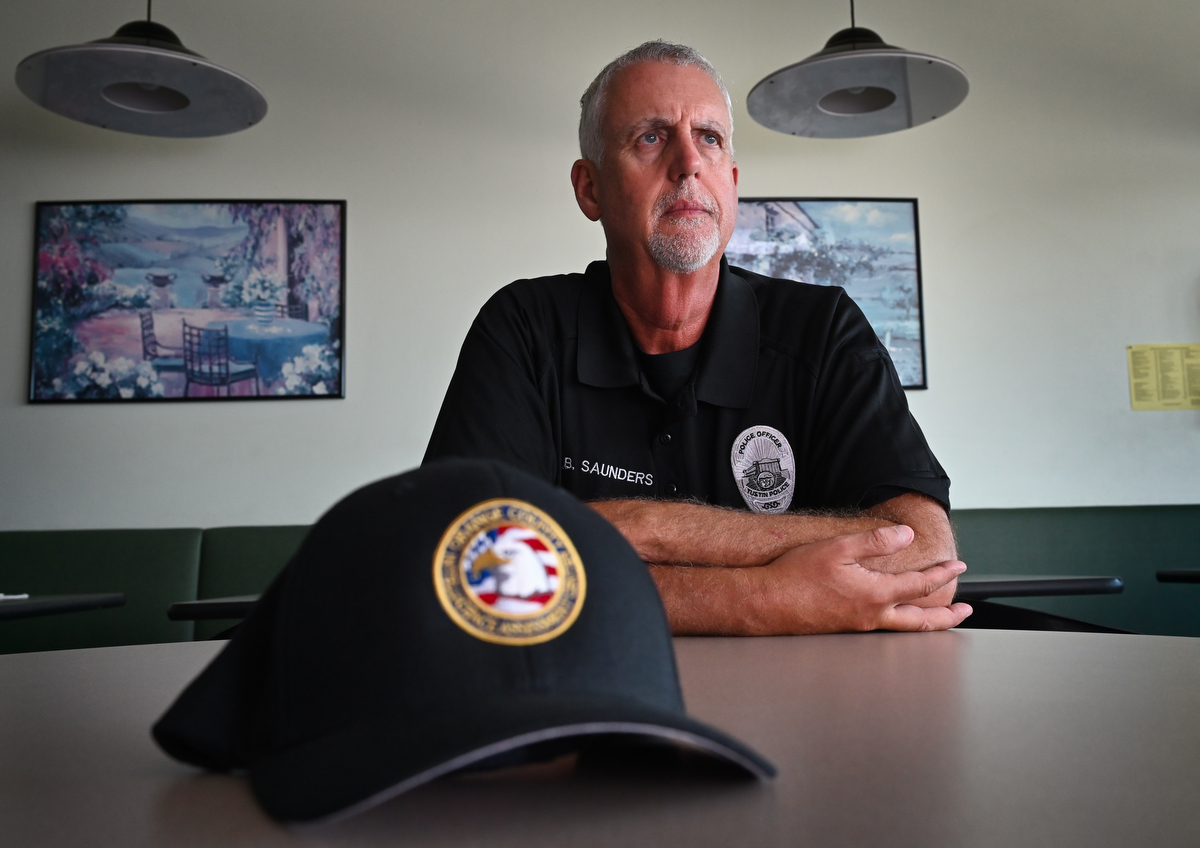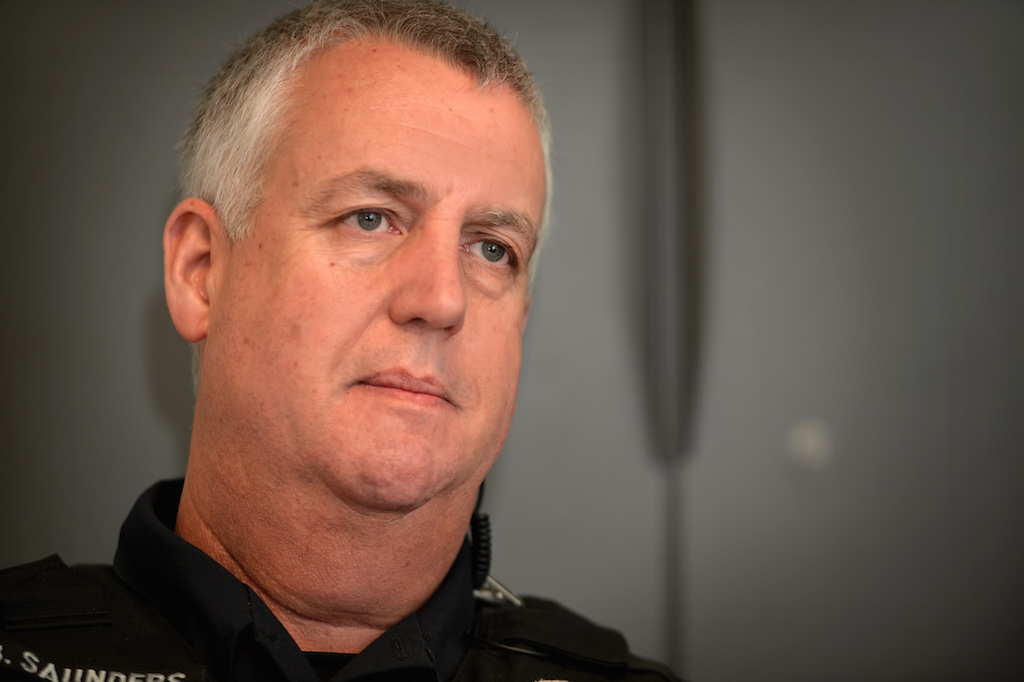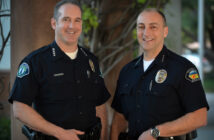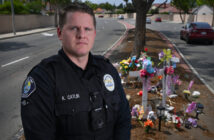Editor’s note: As part of our 10th anniversary, Behind the Badge is sharing stories from our archives: This story is from September 5, 2023.
He’ll always remember the acid taste of the air, the blank looks of devastation on the faces of people combing through rubble looking for loved ones — and the sight of bodies plummeting from upper floors.
There in the swirl of chaos and dust in the immediate aftermath of the Sept. 11, 2001, terror attacks on the World Trade Center, Bradley Saunders’ life was utterly and irrevocably changed. Not broken, but fundamentally shifted.
He calls it the start of his second life.
A successful executive at Morgan Stanley at the time, Saunders was at the base of the World Trade Center after an early morning meeting. He witnessed American Airlines Flight 11 hurtling into the North Tower of the complex, followed 17 minutes later by United Airlines Flight 175 crashing into the South Tower.
“I remember standing at the base of the rubble and saying ‘I will never be on the other side of the tape again,’” said the once and future policeman. “I had already decided my life would go in a different direction. I just made a decision that I am going to go back and fight whatever this (evil) is and make sure it never happens again.”
Bradley Saunders a Coordinator with the Orange County Intelligence Assessment Center Terrorism Liaison Unit was a civilian at Ground Zero the day of the 9/11 terrorist attacks and vivdly remembers the day that inspired him to return to law enforcement.
Photo by Steven Georges/Behind the Badge
Fighting on in remembrance
More than 20 years later, Saunders, 62, works with the Orange County Intelligence Assessment Center (OCIAC) as a coordinator with the Terrorism Liaison Unit, where analysts and investigators examine threat information by implementing advanced technologies.
OCIAC works with the Department of Homeland Security (DHS) and SafeOC (the localized chapter of the national DHS See Something, Say Something campaign) to keep the community safe from terror threats foreign and domestic.
The start of Saunders’ so-called second life involved returning to police work at the age of 40.
Before becoming an investment advisor, Saunders had spent 10 years as a police officer in Garden Grove. He returned to police work with the Tustin Police Department seven months after the Sept. 11 attacks.
Saunders worked there until 2016 as a patrol officer, but expanded his interest in the broader issues of terror and violence globally and nationally as a terrorism and cyber liaison coordinator for Tustin PD.
“I started to form contacts and relationships (with terror experts),” Saunders said. He also became interested in communications and its importance.
Saunders has twice attended 9-11 memorial commemorations in New York. In 2018, he attended in uniform, to pay respects. In 2022, he honored the occasion by also visiting the New York Police Department Intelligence Unit and Real Time Crime Center Operations, “to see what we can learn to do better and evaluate the technologies they utilize.”
Bradley Saunders, talks about his 9/11 experience working at the World Trade center in New York the day the planes flew into the Twin Towers.
File Photo by Steven Georges/Behind the Badge OC
The importance of sharing
Terrorists and would-be attackers almost always leave clues and can be thwarted if the information is found, recognized, and acted upon quickly enough. Finding the clues among the mountains of information and data is what challenges authorities. And then there is the calculus of balancing personal rights and freedoms versus public safety, sussing out what’s real and what’s fanciful.
In many cases, potential tragedies have been averted. The clues were caught, action was taken, and a potential headline was removed from the daily news with few ever knowing about it.
These are the stories Saunders wants to be a part of. For him it is not about recognition. He finds it acutely painful to talk about the events of Sept. 11. Rather, he takes quiet satisfaction from being part of a tragic story never told.
Government agencies have been faulted over the years for zealously holding onto intelligence and failing to share with other agencies. A prime example, according to Saunders, was in the time leading up to 9/11, when elements of the plot leaked, warnings were sounded, but no action was taken.
“When you look at the failures,” Saunders said of sharing prior to Sept. 11, “there were pieces of information that weren’t picked up.” Such as, “why does a person want to learn how to fly a plane, but not land it?” Saunders said of concerns expressed from flight schools where attackers took classes.
OCIAC and similar organizations were created to analyze data from often disparate sources and weave them together. Saunders and his team are constantly collecting and analyzing suspicious activity reports, “ferreting out the keyboard warriors from the bad actors.”
Saunders also helps train the public on what to look for.
“The public may see something we don’t,” Saunders said. “Or it gets noticed but goes unreported.”
Terrorism liaison officer Bradley Saunders stands next to a flag on display in the Tustin PD lobby in 2015 that contains the names of those killed in the terrorist attacks of 9/11.
Saunders was a civilian working at the World Trade Center in New York the day of the attacks, an experience that led him to go back into law enforcement.
File photo by Steven Georges/Behind the Badge OC
The next phase
With all Saunders has seen and done in law enforcement, he could have coasted into a comfortable retirement. However, that is no longer in his DNA.
“When you’re a survivor, it’s a personal thing,” Saunders said.
So, as he neared the quarter-century post in his police career, Saunders made a decision.
“Instead of riding off into the sunset, I decided to stay on and try to make a difference,” he said.
A self-described “tech nerd,” with an interest in systems, platforms, connectivity, geospatial policing, and the everchanging ephemera of police technology, Saunders found a natural fit with OCIAC.
Billed as “an integrated, multi-disciplined, information and intelligence sharing network,” OCIAC was formed in 2007 to fight crime and potential terrorist and public safety threats. The group does this by rapidly analyzing and sharing intelligence and information among law enforcement, fire, health, schools, and the public.
Saunders describes his job as “gathering bread crumbs of information and trying to make sense of it.”
It is exactly where he wants to be, at the front end of technology, tackling violence and its societal implications. Saunders said the intellectual rigors of the job are considerable when trying to figure out someone’s state of mind, behavior, and what motivates them — and doing it through the lens of often imperfect data.
“I compare it to flying an airplane through the clouds without the right navigation equipment,” he said.
Piecing a puzzle together into “something actionable,” is a reward, even when it’s uncertain whether a real attack was imminent. Sometimes the work is just developing a piece of information in a vast mosaic that is not yet understood.
“When I spent time in policing, it was triage work,” Saunders said. “There was a flow and shape to the work. There was an incident, an investigation, an arrest, a trial, and an outcome. There was a beginning, middle, and end. This kind of work is linked, but doesn’t always have an end.”
9/11 remembered
In 2001, Saunders was at Ground Zero in New York. Nearly 3,000 people were killed in the attacks on the World Trade Center, the Pentagon, and Pennsylvania, including 13 of Saunders’ friends and coworkers, and more than 400 firefighters and law enforcement officers.
The surreal mayhem and otherworldly landscape of a world that had just imploded will always stay with Saunders. On that day, with every life-giving breath, survivors and first responders also inhaled death.
Saunders recalls a feeling of “cumulative sadness,” as lost hope, grief, and despair collided.
“While the world has moved on, you will see faces and they haven’t moved past it,” Saunders said. “Part of me is back there and I’m not the only one.”
Sept. 11 will always be a defining day, although for many it attenuates with each passing year.
Not for Saunders. The day is seared in his memory.
“Every time you see something horrible, it’s like another brick in your backpack,” Saunders said of the psychological and emotional aftermath. “It’s OK if there are some things you never come to terms with. Some things are never OK.”
And yet, in destruction Saunders found a purpose to carry forth.
“On September 10, 2001, I was a completely different person,” he said.
On that day, Saunders’ goals were to be mentioned in the company’s annual report and to continue to climb the corporate ladder, overseeing more people and assets.
“I have to assume I would have continued in that direction,” he says.
However, he adds, “I don’t spend a lot of time looking in the rearview mirror. God has a plan and I’m exactly where I’m supposed to be.”
The last act
Although much of what Saunders does is constantly evolving, there are milepost projects ahead that he sees as potential or natural conclusion points in his OCIAC tenure.
Saunders is working with the FBI and its eGuardian system, a portal that Saunders said helps to aggregate and share threat information.
Saunders’ mind is forever in search of “more robust technological solutions.” Even when he leaves OCIAC, Saunders can’t envision being idle.
“I have a unique skill set,” he says. “There are a lot of things I can do to prevent these tragedies from ever happening again.”
—– SafeOC raises public awareness of potential indicators of terrorism and terrorism-related crimes. It emphasizes the importance of reporting suspicious activity, items (e.g. an unattended bag in a public place) and behaviors (e.g. someone trying to break into a restricted area) to local law enforcement.
Sign up for the SafeOC newsletter here to stay up-to-date on the latest.
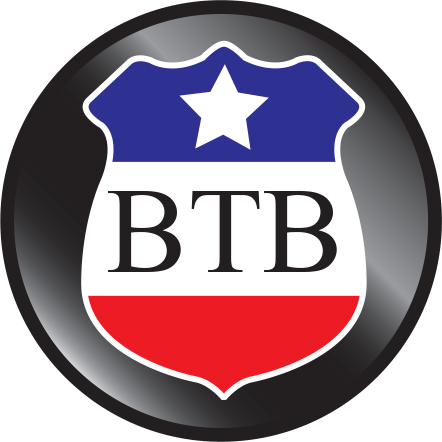 Behind the Badge
Behind the Badge
